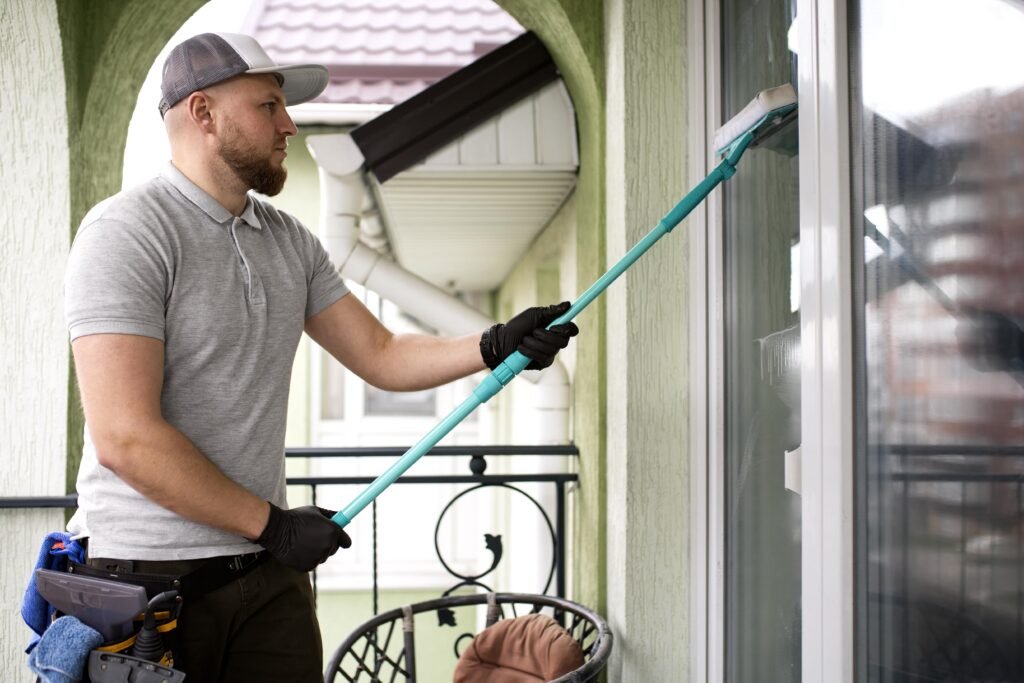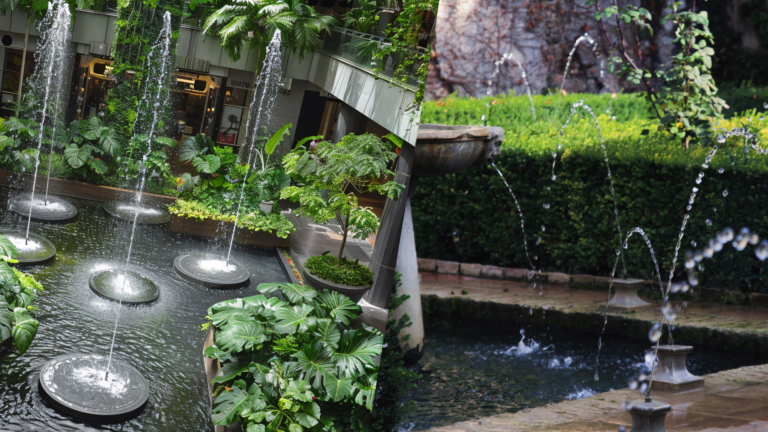How To Clean Siding Without Pressure Washer?
Keeping your siding clean and looking good is so important. Not only will it increase curb appeal, but it also lengthens the life of your home. Pressure washers are popular tools for this job, but sometimes they can be the culprit in damaging the material of the siding or the area around it. Luckily, there are great ways to clean your siding without getting a pressure washer.
This guide will take you through various techniques and tools for manual siding cleaning. From the right cleaning solution to a step-by-step guide, you’ll get everything you need for a bright exterior minus the risks of high-pressure water.
Why Avoid Pressure Washers?
As good as pressure washers are at blasting away dirt and grime in record time, they come with several serious drawbacks that make them less than ideal for cleaning siding. The main risk is the high-pressure water. It is very easy to strip paint off the wall, chip the wood, or even create small cracks and dents on the vinyl or aluminum siding. This indeed ruins your home’s look and will lead to many repairs that are quite costly.
The other reason to avoid pressure washers is that there’s a serious risk of water infiltration. The intense spray will push water behind the siding, which can trap moisture and allow the growth of mold and mildew. This trapped moisture can cause damage to the structure of your home’s exterior walls, leading to costly fixes.
Besides, pressure washers are dangerous if not operated with care. The strong flow of water can harm the user or nearby people if it hits sensitive areas like the eyes or skin. Also, the high pressure can knock loose objects and debris, creating safety hazards around your property.
That’s why many homeowners prefer safer, gentler methods to clean their siding. By using manual cleaning techniques, you can effectively keep your siding looking good and lasting longer without the risks of high-pressure water.
Preparing for the Cleaning Process
Preparation is half the success of a good and efficient cleaning project for siding. Make your checklist, gather your supplies, and prepare the area before starting to ensure a smooth process.
Get Your Supplies: These include a soft-bristle brush or sponge, a long-handled brush or mop for higher areas, a garden hose with a spray nozzle, a bucket, and some protective gear like gloves and goggles. Detergents to be used are mild detergent, white vinegar, or a commercial siding cleaner. With these tools and materials, you can deal with various kinds of dirt or stains effectively.
Inspect the Siding: Inspect your siding for damage, such as cracks, loose panels, or areas where water may seep behind it, before diving into cleaning. Addressing these things beforehand will prevent you from further damaging the structure during the cleaning process.
Clear the Area: Move any patio furniture, decorations, or plants near your house to prevent them from getting wet and possibly damaged by water or cleaning solutions. Cover electrical outlets, light fixtures, and other sensitive areas with plastic sheets or bags to protect them from water and cleaning solutions.
Pre-Wet the Siding: Wet the siding with a garden hose to loosen accumulated dirt and debris. This pre-treatment rinse step will make cleaning easier. Use a gentle setting on the spray nozzle to avoid damaging the siding.
Safety First: Wear the appropriate protective equipment: gloves and goggles, to protect yourself from cleaning solutions or debris. When you have to deal with something at a high level, use a stable and sturdy ladder and place it on a stable surface.
Now that you have done these preliminary steps, you are setting up a safe and effective cleaning environment, allowing you to clean your siding thoroughly without a pressure washer.
Step-by-Step Cleaning Process

Cleaning the siding by hand is a little more labor-intensive, but it’s also much safer and just as effective. Here are step-by-step instructions on how to do it:
Rinse the Siding: Wet the entire surface of your siding with a garden hose first to remove loose dirt and debris. This first rinse is important because it prevents scratching during the scrubbing process.
Prepare the Cleaning Solution: Blend your cleaning solution in a bucket. For general dirt and grime, use warm water and mild detergent. Tackle tougher stains or mold with a solution of one part white vinegar and three parts water. If you are using a commercial cleaner, make sure to follow the manufacturer’s dilution instructions.
Wash the Siding: Immerse your soft-bristle brush or sponge in the cleaning solution, and then go to work scrubbing the siding from the bottom up. Begin at the bottom to prevent streaking. Use a gentle, circular motion to lift dirt and grime. For higher areas, use a long-handled brush or mop, which can reach without the need for a ladder.
Work in Sections: Clean sections of siding about 4-5 feet in width. This way, the cleaning solution should not have time to dry on the siding before you get a chance to rinse it off. Rinse well with the garden hose after each section has been scrubbed.
Rinse Thoroughly: After you’ve washed the whole area, give the siding a final, thorough rinse with a garden hose. Make certain all soap is rinsed off to prevent streaks and film.
Dry the Siding: Allow the siding to air dry thoroughly. If you observe areas with dirt that has not been removed, a second cleaning may be performed in those areas.
Inspect Your Work: Once the siding has had a chance to dry, step back and take a good look. Check for any spots that seem to need a little more work or a second cleaning. For stubborn stains, try a more aggressive cleaning agent and go back over the area with the scrub brush.
By following these steps, you can successfully clean your siding without using a pressure washer, keeping your home’s exterior in great shape.
Dealing with Stubborn Stains and Mildew
The generic ways of cleaning at times are ineffective for very stubborn stains or mildew. In such a case, you need to get some focused cleaning done again to make your siding shine.
- Identify the Stains: The first thing to do is to identify the kind of stain you are facing: either mold, mildew, algae, or rust. Knowing the type of stain will help you choose the correct cleaning method and solution.
- Use Stronger: Cleaning Solutions: For mildew and tougher stains, you might need a stronger solution. Here are some alternatives:
- Vinegar Solution: A mix of white vinegar with an equal amount of water is a good mixture. It is, in particular, very good for mildew and mold. Apply the solution over the affected area, leave it for 10–15 minutes, and then scrub.
- Oxygen Bleach Solution: It is quite safe and green compared to conventional chlorine bleach. Follow the manufacturer’s instructions on mixing and apply to the stained area. Wait for the recommended time before scrubbing the solution.
- Commercial Cleaners: Many different kinds of commercial cleaners have been made especially for the tough stains that are found on siding. The best way to use them is by following the instructions mentioned on the label.
- Apply the Cleaning Solution: Spray or apply the stronger cleaning solution directly onto the stained areas. Allow the solution to sit for the recommended amount of time, usually around 10-15 minutes. This soaking period helps in breaking the stain down easily for scrubbing.
- Scrub Stains: Soak a soft-bristle brush or sponge and gently scrub away the stained areas in a back-and-forth motion. You may need to get a little tough for the hard stains, but again, don’t ruin the siding material. Use a long-handled brush for higher areas or hard-to-reach places.
- Rinse Properly: After scrubbing, rinse the area completely with a garden hose so all the cleaning solution is washed away together with loosened dirt. Do not leave any residue, as it will attract more soil and bring back staining again.
- Repeat as Needed: Very stubborn stains might need repetition of the procedure. Apply the cleaning solution once again, let it sit, and then scrub until the stain is fully removed.
- Prevent Further Stains in the Future: To prevent more mildew and stains, do the following:
- Keep it dry: Trim all overhanging trees or shrubs that would keep the siding from getting exposed to the sun, drying it out.
- Improve drainage: Ensure gutters and downspouts stay clog-free and that downspouts direct water away from the home to prevent pools of water at the base of your home.
- Regular maintenance: Clean the siding regularly, watching for the first signs of mildew or staining of the material.
With these measures in place, it is an effective process to fight stubborn stains and mildew, hence keeping your siding clean and well-maintained without necessarily having to use a pressure washer.
Regular Maintenance Tips
Regular maintenance of your siding will keep it in good condition. A few simple practices added to your routine will help extend its life and keep your home looking good.
- Regular Inspections: Inspect your siding at least twice a year, ideally in the spring and fall. Look for any signs of damage, such as cracks, warping, or loose panels. Detecting issues early will prevent minor problems from developing into larger and more costly repairs.
- Clean Once a Year: Make it a general routine to clean your siding at least once every year. This can help in removing the accumulation of dirt, grime, and even mildew from the surface. This will give your siding a fresh and new look. Use cleaning solutions that are mild and eco-friendly, while following the manual process of cleaning to avoid further damage.
- Trim Vegetation: Ensure that your trees, shrubs, and other vegetation do not grow up against the siding. Overgrown plants may trap moisture against the siding, giving way for mold and mildew growth. This will also reduce the chances of vegetation rubbing and scuffing against your siding and making scratches in the finish.
- Maintain Gutters and Downspouts: Cleaning your gutters and downspouts regularly will ensure proper drainage. Gutter buildup can allow water to wash down the siding and overspill, which can lead to staining as well as potential water damage. Ensure water discharges away from the foundation of your home.
- Mold and Mildew Inspection: Mold and mildew grow where there is water and shade. Monitor these areas on a routine basis and clean any mold or mildew on the spot with a vinegar solution or a commercial cleaner. Prompt action prevents the spores from spreading and causing larger infestations.
- Repair Damage Promptly: Repair damage without delay should you see any during your inspections. This includes fixing loose panels, sealing cracks, and repainting chipped areas. Timely repairs prevent further deterioration and protect the underlying structure of your home.
- Avoid Harsh Chemicals: When cleaning the sidings, stay away from harsh chemicals as they can damage the material and harm the environment. Use mild detergents, vinegar solutions, and eco-friendly commercial cleaners to keep your siding lasting longer.
- Monitor Weather Conditions: After bad weather like storms or strong winds, check your siding for damage. Look for impacts, loose panels, or other issues. Fixing weather-related damage quickly helps maintain your siding’s strength.
- Know Your Siding: Different types of siding need different care. Whether you have vinyl, wood, aluminum, or fiber cement siding, learn the specific needs and best practices for your type. This knowledge helps you provide the best care.
Following these maintenance tips keeps your siding in good condition year-round, avoiding frequent deep cleanings and major repairs. Regular care ensures your home’s exterior stays attractive and well-protected for years.
In conclusion
Cleaning and maintaining your siding without a pressure washer is an easy, effective way of keeping your home looking great while avoiding potential damage. By understanding the risks of pressure washers, preparing properly, following a detailed cleaning process, treating stubborn stains, and keeping up with regular maintenance, you can keep your siding in top shape. These methods not only maintain your home’s appearance but also protect its structure, providing long-term benefits. With a little effort and the right approach, you can have a sparkling exterior that enhances your home’s curb appeal and value for years to come.
FAQs
Can I use any type of brush to clean the siding without a pressure washer?
It’s best to use a soft-bristle brush or sponge to avoid scratching or damaging the siding surface. These materials effectively lift dirt without causing harm.
Is it safe to use vinegar to clean siding?
Yes, vinegar is a safe and effective cleaner for siding. Mix one part vinegar with three parts water for a mild solution that helps remove stains like mold and mildew.
How often should I clean my siding without a pressure washer?
Aim to clean your siding at least once a year to prevent buildup of dirt and grime. More frequent cleaning may be necessary in areas prone to mold or pollution.
What should I do if my siding has stubborn stains?
For stubborn stains, consider using a stronger cleaning solution like oxygen bleach or a commercial cleaner. Apply the solution, let it sit, then gently scrub with a brush.
Can I clean high areas of siding without a ladder?
Yes, you can use a long-handled brush or mop to clean higher areas of siding safely from the ground. This avoids the need for climbing on ladders, reducing risks.







